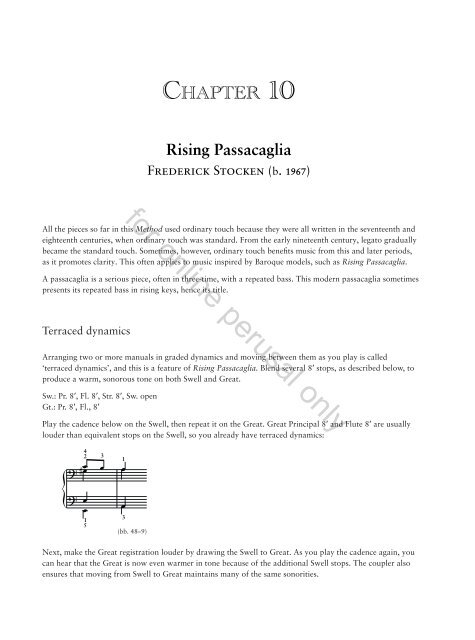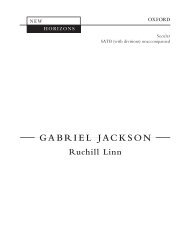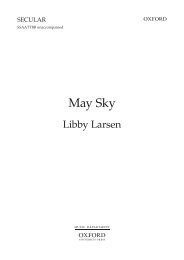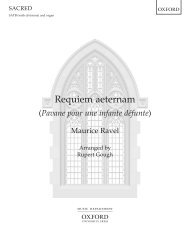New Oxford Organ Method
A single piece of repertoire is the primary focus for each chapter, with preparatory exercises providing the necessary technical work building towards the piece. Each lesson covers four main topics, which are systematically developed: practice methods, registration, fingering and pedalling, and historically-informed interpretation. The method is for keyboard players of any age who are establishing first steps at the organ with or without a teacher. It will also serve more experienced organists who want to improve their technique.
A single piece of repertoire is the primary focus for each chapter, with preparatory exercises providing the necessary technical work building towards the piece. Each lesson covers four main topics, which are systematically developed: practice methods, registration, fingering and pedalling, and historically-informed interpretation. The method is for keyboard players of any age who are establishing first steps at the organ with or without a teacher. It will also serve more experienced organists who want to improve their technique.
- No tags were found...
Create successful ePaper yourself
Turn your PDF publications into a flip-book with our unique Google optimized e-Paper software.
Chapter 10<br />
Rising Passacaglia<br />
Frederick Stocken (b. 1967)<br />
for online perusal only<br />
All the pieces so far in this <strong>Method</strong> used ordinary touch because they were all written in the seventeenth and<br />
eighteenth centuries, when ordinary touch was standard. From the early nineteenth century, legato gradually<br />
became the standard touch. Sometimes, however, ordinary touch benefits music from this and later periods,<br />
as it promotes clarity. This often applies to music inspired by Baroque models, such as Rising Passacaglia.<br />
A passacaglia is a serious piece, often in three-time, with a repeated bass. This modern passacaglia sometimes<br />
presents its repeated bass in rising keys, hence its title.<br />
Terraced dynamics<br />
Arranging two or more manuals in graded dynamics and moving between them as you play is called<br />
‘terraced dynamics’, and this is a feature of Rising Passacaglia. Blend several 8ʹ stops, as described below, to<br />
produce a warm, sonorous tone on both Swell and Great.<br />
Sw.: Pr. 8ʹ, Fl. 8ʹ, Str. 8ʹ, Sw. open<br />
Gt.: Pr. 8ʹ, Fl., 8ʹ<br />
Play the cadence below on the Swell, then repeat it on the Great. Great Principal 8ʹ and Flute 8ʹ are usually<br />
louder than equivalent stops on the Swell, so you already have terraced dynamics:<br />
4<br />
2<br />
1<br />
? # œ œ œ<br />
{?<br />
œ<br />
œ œ<br />
1<br />
5<br />
3<br />
3<br />
(bb. 48–9)<br />
Next, make the Great registration louder by drawing the Swell to Great. As you play the cadence again, you<br />
can hear that the Great is now even warmer in tone because of the additional Swell stops. The coupler also<br />
ensures that moving from Swell to Great maintains many of the same sonorities.


















